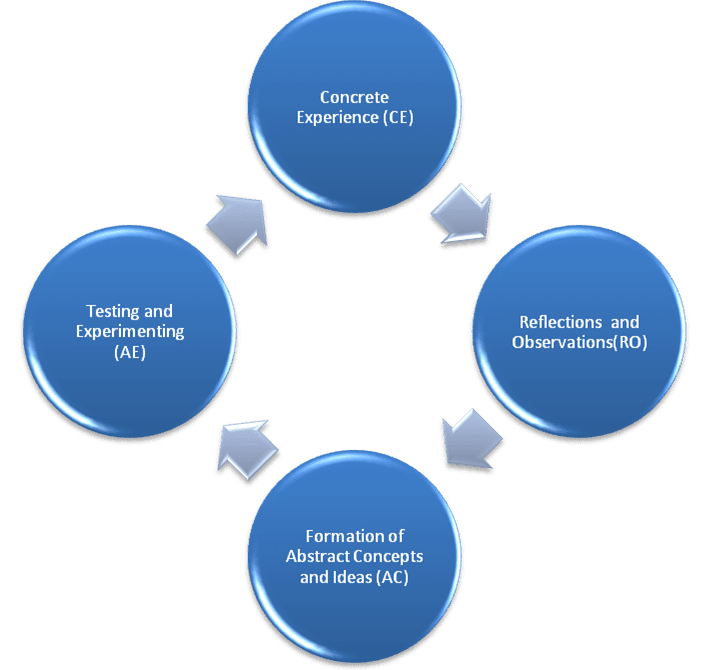Measuring Results From Training
Although we all know that training can have many amazing benefits, sometimes it can be hard to prove those benefits and attach a dollar value to training. Some topics, like sales training or time management, might have direct, tangible benefits. Other topics, like communication or leadership, might have benefits that you can’t put a dollar value on.
Kolb’s Learning Styles
In order to train individuals effectively, the trainer must understand that there are four ways that an individual can learn. Although each individual has a preferred style, all four elements must be included for learning to be effective. This module will look at David Kolb’s four stage learning process and the four related styles of learning.
The Four-Stage Process
A learner’s experience begins with Concrete Experience – things that happen to that individual. The individual then observes the situation, making Reflections and Observations. Next, the individual thinks about what has happened and develops Abstract Concepts. Finally, the individual Actively Experiments with those new ideas, leading to new Concrete Experiences – and the cycle begins all over again.
It is important to remember that this cycle occurs any time learning is required, whether it is learning how to use a new dishwasher at home, learning a new computer program, or trying to train your dog.
With our Measuring Results From Training course, you will learn about the different ways to evaluate training progress, and how to use those results to demonstrate the results that training brings. Once the training has been evaluated the next step is to modify and updated the curriculum to create content that is better suited for the participants.
Course Objectives:
- Understand Kolb’s learning styles and learning cycle
- Understand Kirkpatrick’s levels of evaluation
- Be familiar with many types of evaluation tools, including goal setting, tests, reactionary sheets, interviews, observations, hip-pocket assessments, skill assessments, and learning journals
- Understand when to use each type of evaluation tool
- Be able to perform a needs assessment
- Know how to write learning objectives and link them to evaluation
- Be able to write an evaluation plan to evaluate learning at each stage of the training and far beyond
- Know how to identify the costs, benefits, and return on investment of training
- Be familiar with the parts of a business case










Reviews
There are no reviews yet.